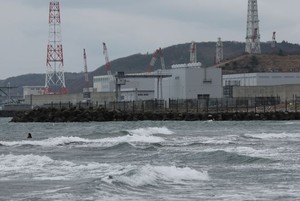THE ASAHI SHIMBUN
December 28, 2023 at 17:41 JST
For the first time, the central government employed a legal mechanism to act in place of a prefectural government and push ahead land reclamation work in Okinawa Prefecture for the contentious relocation of a U.S. military base.
On Dec. 28, land minister Tetsuo Saito undertook administrative subrogation on behalf of Okinawa Governor Denny Tamaki and approved the design change for the land reclamation project off the coast of Henoko in Nago.
The site will be used for the relocation of U.S. Marine Corps Air Station Futenma, from Ginowan, also in Okinawa.
Ministry officials submitted the approved document to the Okinawa Defense Bureau and land reclamation work based on the new design is expected to begin in mid-January.
Tamaki had long refused to approve the design change application submitted by the Defense Ministry.
Meeting with reporters on Dec. 28, Tamaki said, “Administrative subrogation is not an issue only for Okinawa Prefecture. We must conduct a thorough assessment to clarify what problems might emerge for all local governments in Japan as well as to determine what we will ask of the central government.”
The previous day, the Okinawa prefectural government submitted an appeal to the Supreme Court of the Dec. 20 ruling by the Naha branch of the Fukuoka High Court that granted the administrative subrogation order to the central government.
But that appeal will not stop the land reclamation work off Henoko from proceeding. Only a ruling by the Supreme Court in favor of Okinawa Prefecture will bring a halt to such work.
In explaining why the appeal was submitted to the Supreme Court, Tamaki said on Dec. 27, “The court’s position was slanted toward the public interest of the central government and did not consider the will of the Okinawa people, which is the true public interest. That shows that even the judiciary has accepted the fixed view that Henoko is the only option.”
Despite reports of the weak seabed and opposition from Okinawa residents, the central government started the reclamation work off Henoko in December 2018.
In 2019, it acknowledged the need to reinforce soft areas of the seabed and applied for a change in the design of the landfill work in April 2020.
The prefecture rejected the application and the case went to the Supreme Court, which ruled in favor of the central government.
When Tamaki continued to refuse to approve the change, the central government filed the lawsuit at the Naha branch of the Fukuoka High Court seeking an administrative subrogation order.
(This article was written by Daisuke Yajima and Taro Ono.)




















A peek through the music industry’s curtain at the producers who harnessed social media to help their idols go global.
A series based on diplomatic documents declassified by Japan’s Foreign Ministry
Here is a collection of first-hand accounts by “hibakusha” atomic bomb survivors.
Cooking experts, chefs and others involved in the field of food introduce their special recipes intertwined with their paths in life.
A series about Japanese-Americans and their memories of World War II